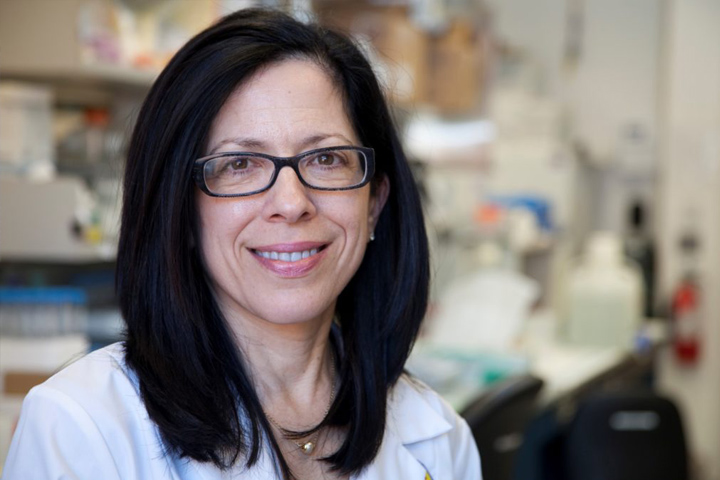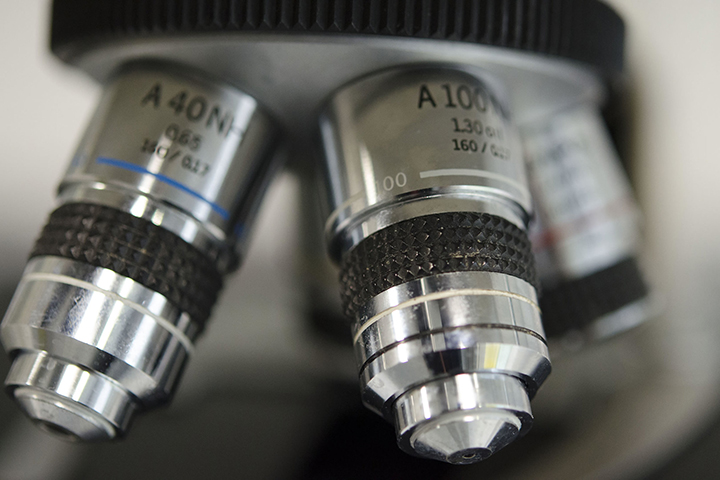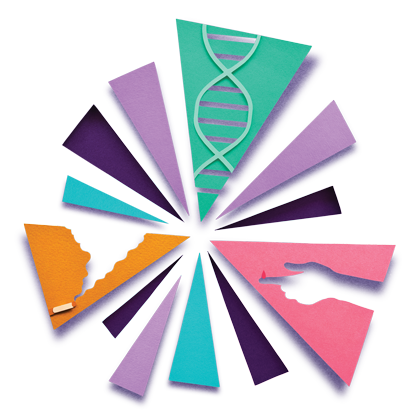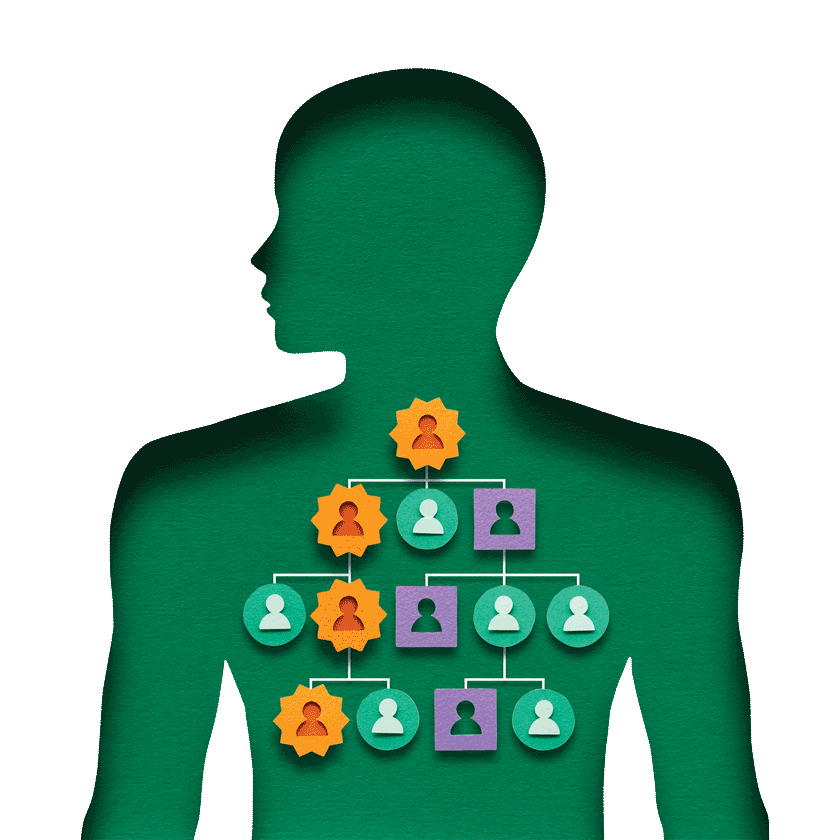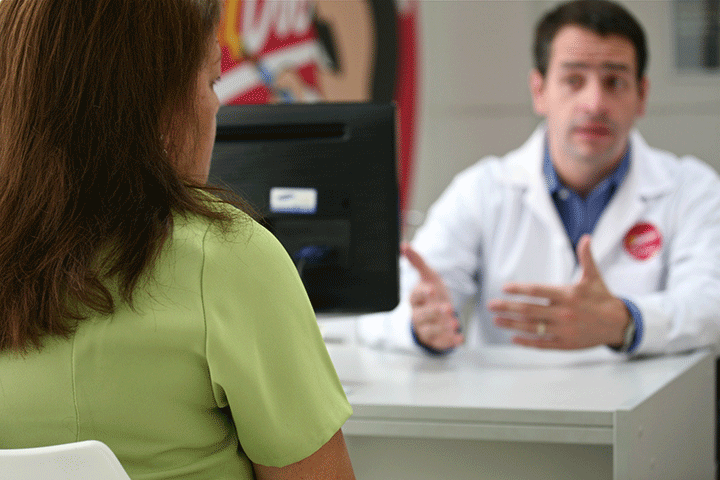New Liquid Biopsy Shows Promise for Early Detection

We know from the success of mammography (breast cancer) and colonoscopy (colon cancer) that early detection tests translate to longer lives, even cures.
But there is not yet any standardized way of catching pancreatic cancer in its earliest stages. Researchers want to change that, and many are looking at blood tests called liquid biopsies to give more people, especially those at the highest risk of developing the disease, better odds of surviving.
At the April 2024 American Association for Cancer Research Annual Meeting, researchers presented data on an investigational blood test, called a liquid biopsy, to detect pancreatic cancer. The test averaged 90 percent accuracy in detecting early-stage disease among participants from the United States, China, and South Korea.
How the Test Works
Exosomes are tiny, sac-like structures that are released from cells and act like cargo ships carrying some of the cell’s contents—such as proteins, DNA, RNA, lipids, and metabolites—as a form of intercellular communication. The new liquid biopsy is exosome-based. When it was combined with CA 19-9, a biomarker for pancreatic cancer, the liquid biopsy was even more accurate.
The five-year survival rate for pancreatic cancer diagnosed at stage I or II, before the cancer has spread, is approximately 44 percent, according to the National Cancer Institute. That’s compared with an estimated 3.2 percent for patients with metastatic disease—disease that has spread to other organs outside the pancreas.
“What we want in pancreatic cancer is a way to find this disease early, such as stage I or II, when patients can get into surgery,” says senior author Ajay Goel, Ph.D., AGAF, professor and chair of the Department of Molecular Diagnostics and Experimental Therapeutics at Beckman Research Institute of City of Hope and associate director of Basic Science at City of Hope Comprehensive Cancer Center (Duarte, California). “Treatment for pancreas cancer that’s more advanced is getting better, but it’s not where it needs to be. Right now, patients who have earlier stage disease and are candidates for surgery have the best chance at a longer life. And some of them may be cured. And you don’t often hear that with pancreas cancer.”
Current biomarkers used in the clinic, such as the CA 19-9 blood test, lack sufficient sensitivity for early detection of pancreatic cancer. And pancreatic tumors are hard to feel because the pancreas is located deep in the abdomen.
To overcome these challenges, the City of Hope team raised the specificity and sensitivity of their liquid biopsy approach by testing plasma for exosomal cargo, which is shed by tumors and mirrors their tissue of origin. The team also identified and tested eight microRNAs, which are small molecules that are found on exosomes shed by pancreatic cancers. They then combined these microRNAs with five cell-free DNA markers found in the blood of patients with pancreatic cancer to develop a signature to detect this disease.
About the Study
This multi-institutional international study included 523 pancreatic cancer participants and 461 healthy participants, including patients from Japan (150 with pancreatic cancer and 102 healthy donors), the U.S. (139 with pancreatic cancer and 193 healthy donors), South Korea (184 with pancreatic cancer and 86 healthy donors), and China (50 with pancreatic cancer and 80 healthy donors).
The liquid biopsy signature was trained on information from the Japanese group and validated in the groups from the U.S., South Korea, and China. According to the results, the liquid biopsy detected 93 percent of pancreatic cancers in the U.S. cohort, 91 percent of pancreatic cancers in the South Korean cohort, and 88 percent of pancreatic cancers in the Chinese cohort.
Further, when they combined their exosome-based biopsy with the pancreatic cancer marker CA 19-9 in the U.S. cohort, the test accurately detected 97 percent of stage I and II pancreatic cancers. Stage I pancreatic cancers are confined to the pancreas; some stage II cancers have spread to nearby lymph nodes but have not spread to distant sites.
The researchers previously tested the performance of their exosome-based liquid biopsy signature in a cohort of 95 individuals from either the U.S. or Japan, reporting a 98 percent pancreatic cancer detection rate.
“When we reported that smaller study last year, we thought we were on to something, but clearly, we needed a larger, more diverse population,” says Goel. “And that’s what we have here in this current study. But the nature of science is the more you validate, the more you tinker with what you have, and the better you become. I am pleased, and the data on this current study looks good, but I always say it’s not good enough. Subsequent validation is very important.”
The final data from the study, which is set to be published shortly, contains about 500 more participants, “And the data looks equally as good,” he adds.
The Road Ahead
The researchers are now applying their microRNA test to blood samples collected via NCI’s Prostate, Lung, Colorectal, and Ovarian Cancer Screening Trial. Because those samples were collected years before some participants received a cancer diagnosis, the analysis will determine whether their test can find pancreatic cancer before traditional diagnostic tests like CT scans, Goel explains.
And though the liquid biopsy is not yet ready for prime time, it may not be that far off. “We have more work to do clearly,” he notes. “We need to determine the clinical use of this test. It would be overkill to run on 30,000 people because the incidence is low, and it’s probably going to be used best in a high-risk cohort, like for those people with a family history of pancreas cancer, chronic pancreatitis, or new-onset diabetes. That would probably be the starting point, but again, I don’t know what we would see. Maybe we would see disease markers rise very early and then be able to resect early and give people a better chance at a long life. We have to do that work and then go from there.”
Identifying At-Risk Cysts
Goel also believes the test may help better clarify the potential for malignancy in asymptomatic pancreatic cysts. Most pancreatic cysts in the general population don’t cause problems for patients, but improved detection technologies have led to about a threefold increase in known cysts. “Patients don’t want a cyst, and they say get it out,” he explains. “The surgery is difficult and can lead to metabolic issues. So we need to do a better job of figuring out which cysts are high-risk from those that aren’t high risk. And maybe we’ll find this liquid biopsy can help prevent these unnecessary surgeries.”
The ultimate goal, of course, is the randomized clinical trial, which will determine whether it reduces death. “I have seen some pancreatic cancer early detection tests being marketed that have such a small amount of data attached to them,” Goel observes. “That’s just not good enough. You change people’s lives by doing the hard work.”
